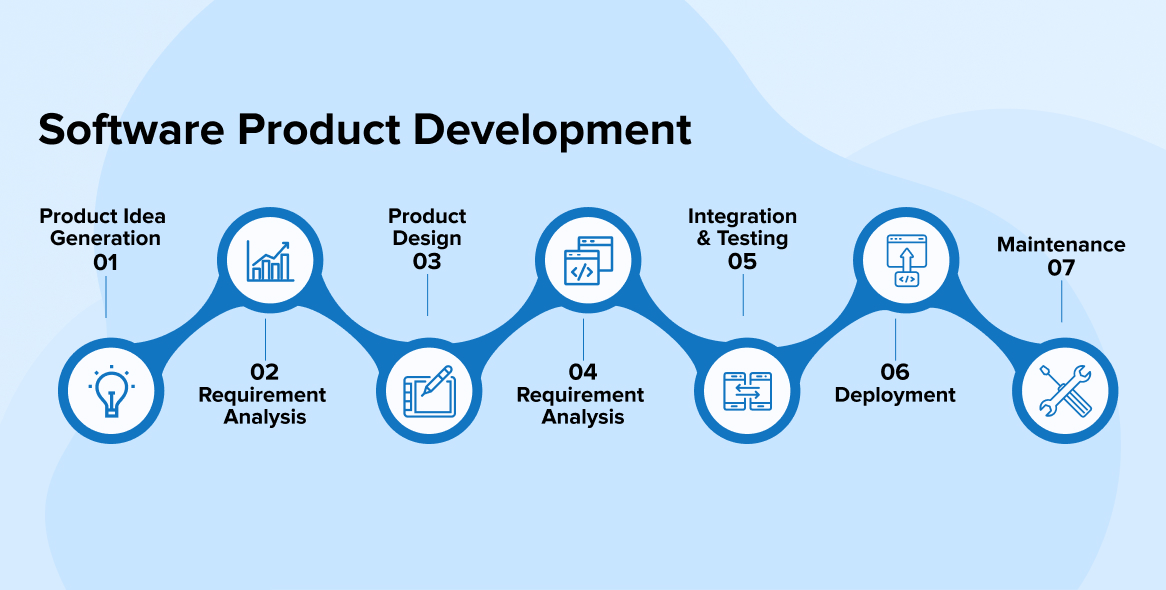
Introduction
In the ever-evolving landscape of business, product development remains a cornerstone for companies striving to stay competitive. A well-executed product development process not only results in innovative solutions but also plays a pivotal role in capturing market share and fostering long-term success. In this article, we delve into the intricacies of product development, exploring key elements such as the process, market dynamics, sales strategies, team dynamics, and management practices.
Product Development Process
The product development process is a multifaceted journey that begins with ideation and culminates in the launch of a successful product. Understanding the stages involved is crucial for ensuring a streamlined and effective development process. These stages typically include ideation, research, design, development, testing, and launch. A well-defined roadmap guides the team through these stages, ensuring that each step aligns with the overall business strategy.
Market Dynamics
A successful product development process hinges on a deep understanding of the market. Companies must conduct thorough market research to identify opportunities, assess customer needs, and understand industry trends. Analyzing market dynamics helps in shaping the product strategy and tailoring the offering to meet the demands of the target audience. By staying attuned to market fluctuations, companies can position their products more effectively and gain a competitive edge.
Sales Strategies
An integral part of product development is devising effective sales strategies. A well-conceived sales plan encompasses pricing strategies, distribution channels, and customer engagement tactics. Understanding the target market and tailoring sales efforts to match consumer preferences enhances the chances of success. Sales teams play a critical role in bridging the gap between the product and the customer, making it essential to align their efforts with the overall product strategy.
Team Dynamics
The success of any product development initiative relies heavily on the collaborative efforts of a dedicated team. Building a cohesive and cross-functional team ensures that diverse perspectives are considered throughout the process. Effective communication, shared goals, and a culture of innovation contribute to a positive team dynamic. Assembling a team with varied skills and experiences enhances problem-solving capabilities, fostering a more resilient and adaptable development process.
Product Management
Product management is a key aspect of overseeing the entire product development lifecycle. It involves making strategic decisions at each stage, aligning the product roadmap with business goals, and ensuring that the development process stays on track. Effective product management requires a deep understanding of market needs, customer feedback, and industry trends. By leveraging data-driven insights, product managers can make informed decisions that contribute to the overall success of the product.
Strategic Planning
Strategic planning is the bedrock of successful product development. It involves setting clear objectives, defining the target audience, and outlining a roadmap that aligns with the company’s long-term goals. A well-crafted strategy considers the competitive landscape, technological advancements, and potential challenges, ensuring that the product remains relevant and resilient in the face of market changes.
Customer-Centric Approach
In today’s business environment, a customer-centric approach is paramount. Companies must actively seek customer feedback at every stage of product development, from ideation to post-launch evaluations. Understanding customer needs, preferences, and pain points enables companies to tailor their products to meet or exceed expectations. Engaging with customers fosters loyalty and provides valuable insights that can inform future iterations and updates.
Innovative Ideas and Feedback Loops
Innovation is at the heart of successful product development. Encouraging a culture of creativity within the team and soliciting innovative ideas from all members can lead to breakthrough solutions. Additionally, creating feedback loops with customers, stakeholders, and team members facilitates continuous improvement. By actively seeking and implementing feedback, companies can refine their products and stay ahead of the curve in a rapidly changing market.
New Product Development (NPD) Success
The success of new product development relies on a combination of factors, including a robust process, effective team collaboration, strategic planning, and a customer-centric mindset. By integrating these elements, companies can increase the likelihood of NPD success and achieve sustainable growth. Moreover, learning from both successes and failures is crucial for refining future product development strategies.
Key Activities and Steps
Throughout the product development process, various key activities and steps contribute to its success. These include idea generation, market research, prototyping, testing, iteration, and, ultimately, the product launch. Each activity requires careful consideration and meticulous execution to ensure that the product meets both business and customer expectations.
Example of Successful Product Development
A notable example of successful product development is the introduction of the iPhone by Apple Inc. The development process involved a combination of visionary leadership, meticulous design, cutting-edge technology, and a deep understanding of consumer preferences. Apple’s ability to create a product that seamlessly integrated hardware, software, and user experience set a new standard in the smartphone industry, resulting in unprecedented success and market dominance.
Conclusion
In conclusion, product development is a dynamic and multifaceted process that requires careful planning, innovative thinking, and a customer-centric approach. From ideation to launch, companies must navigate through various stages, ensuring that each step contributes to the overall success of the product. By incorporating market insights, fostering team collaboration, and staying attuned to customer needs, businesses can create products that not only meet but exceed expectations, driving long-term success in today’s competitive landscape.





